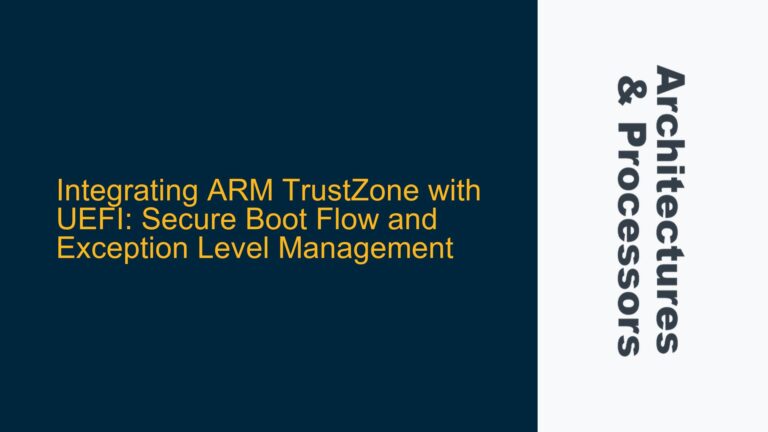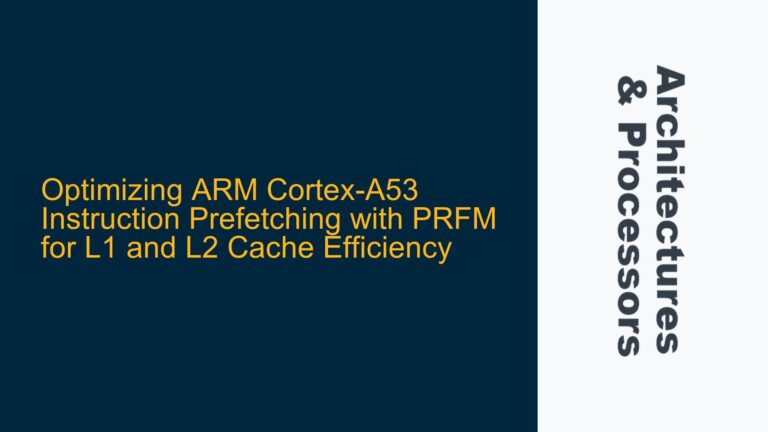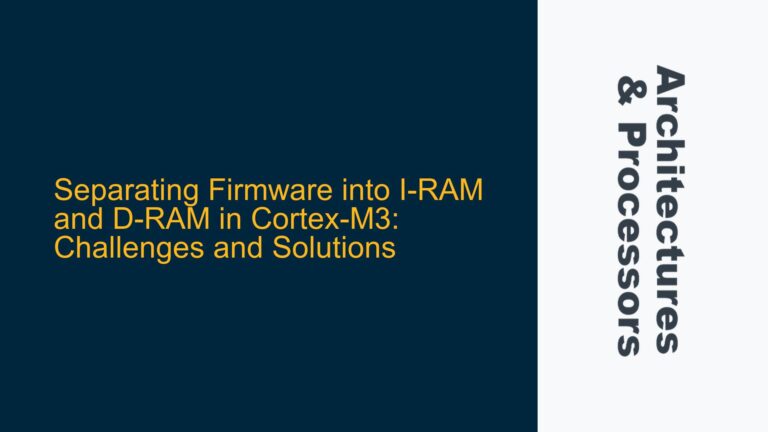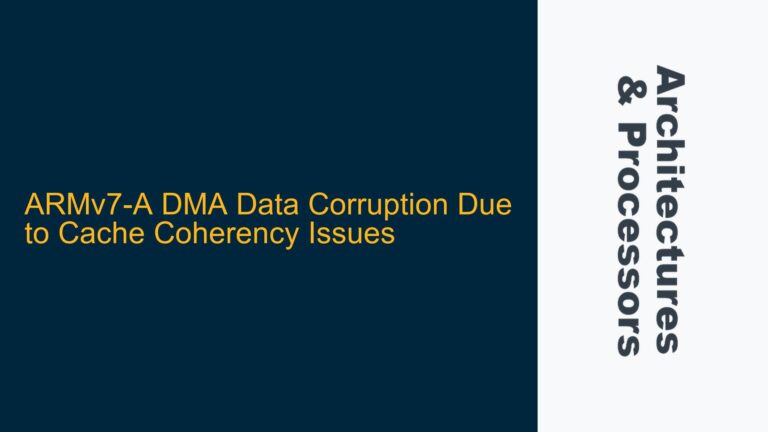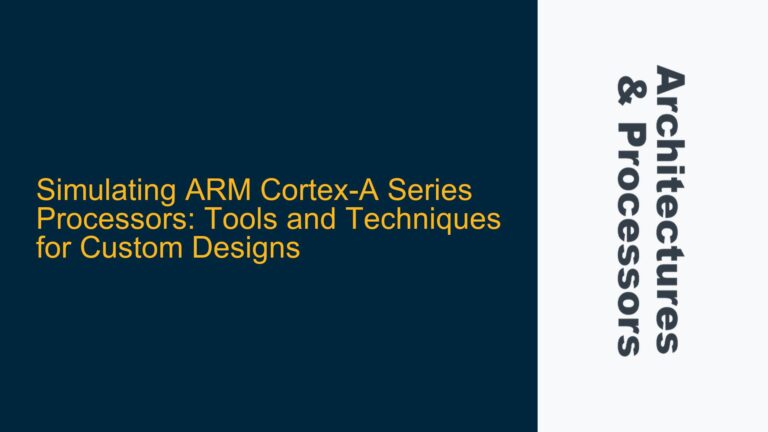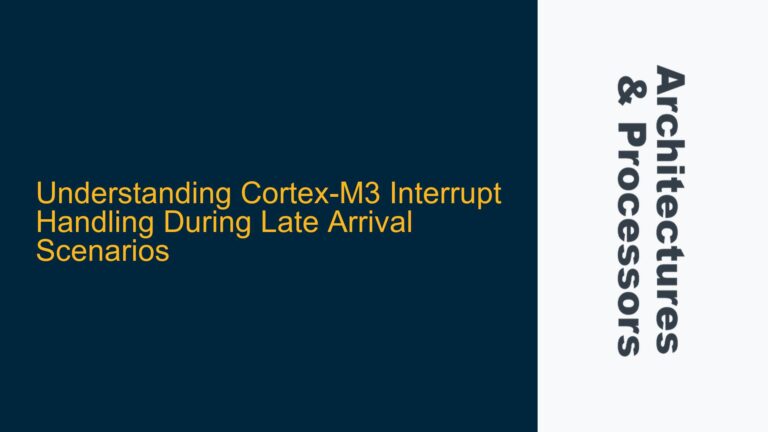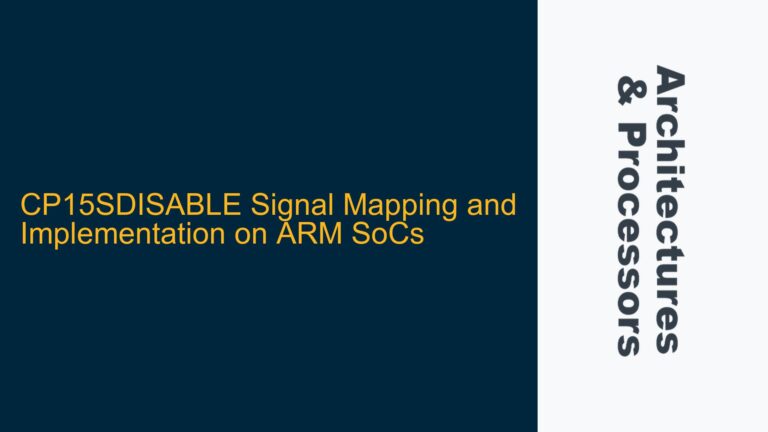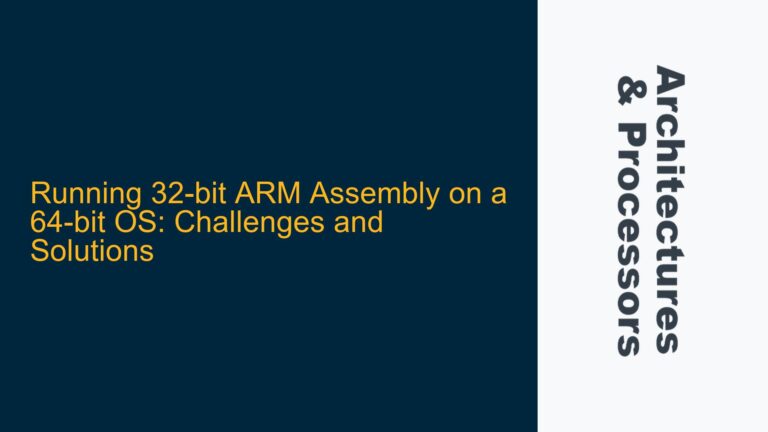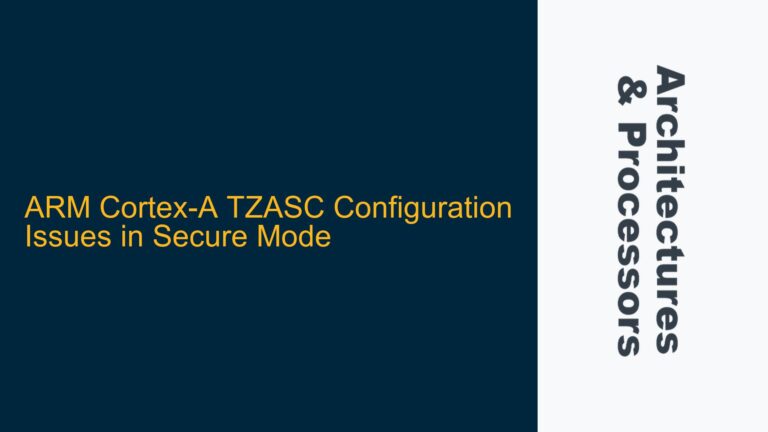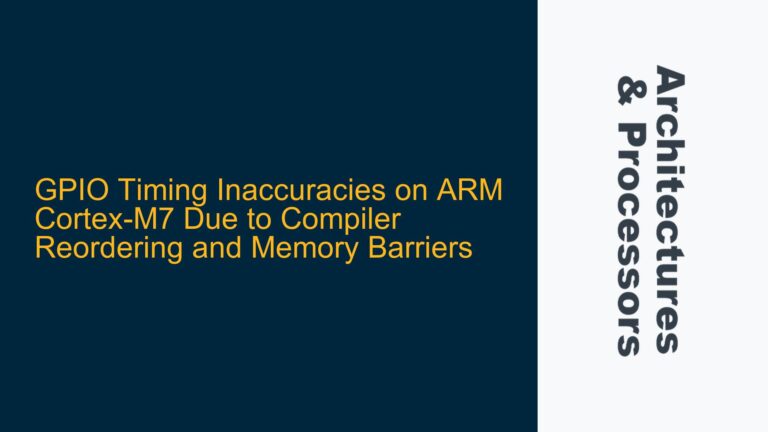Integrating ARM TrustZone with UEFI: Secure Boot Flow and Exception Level Management
ARM TrustZone and UEFI Integration Challenges in Secure Boot Flow The integration of ARM TrustZone with UEFI presents a unique set of challenges, particularly when attempting to maintain the secure boot flow while ensuring that the Secure Monitor and Secure OS operate seamlessly within the UEFI environment. The primary issue revolves around the compatibility and…
